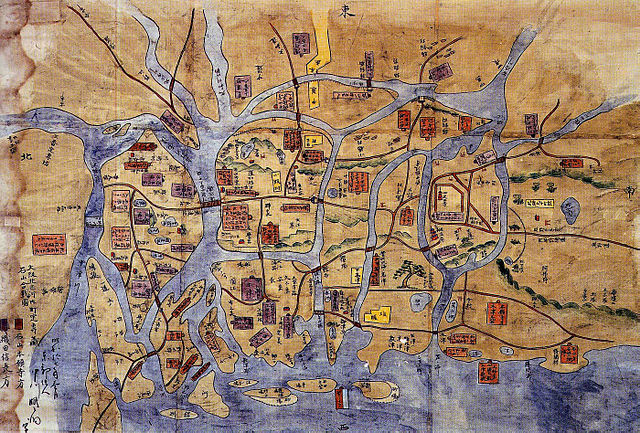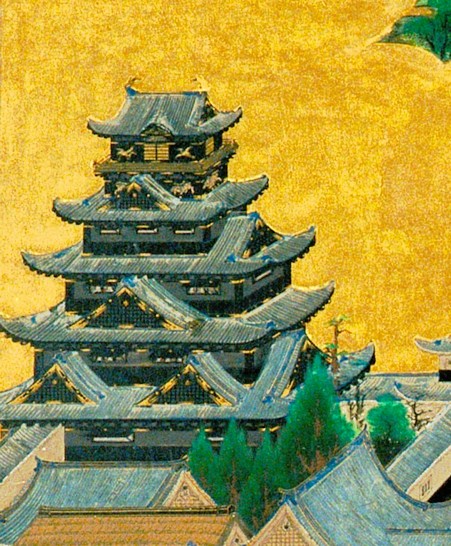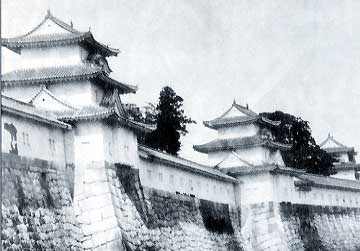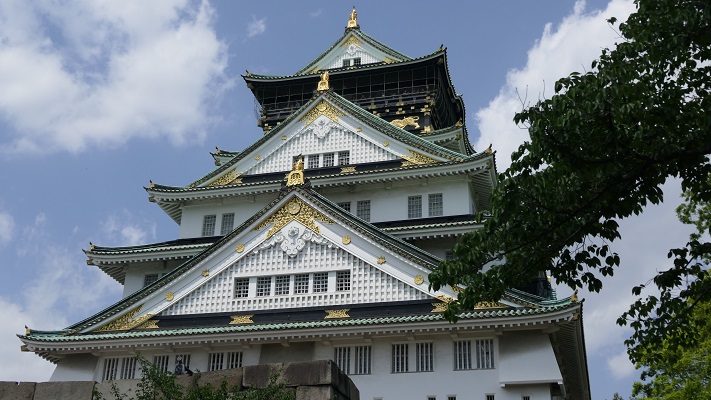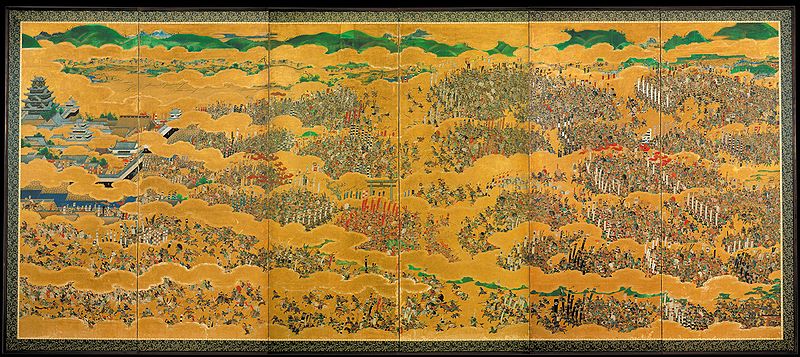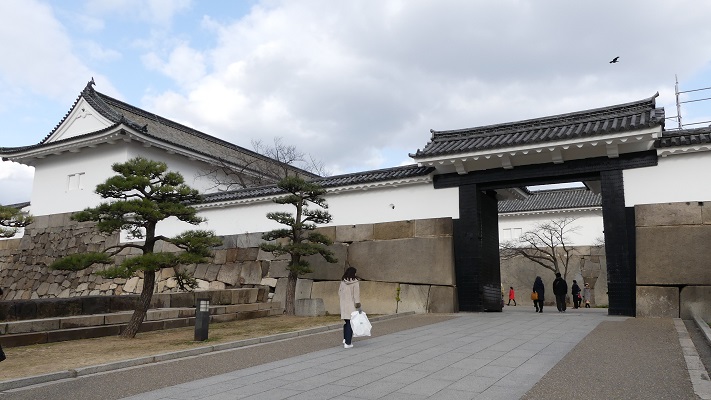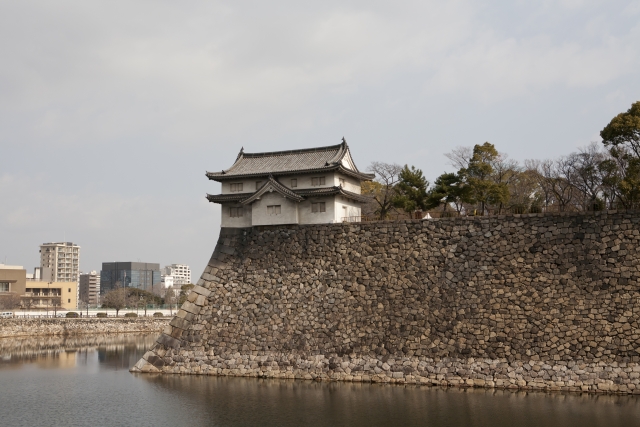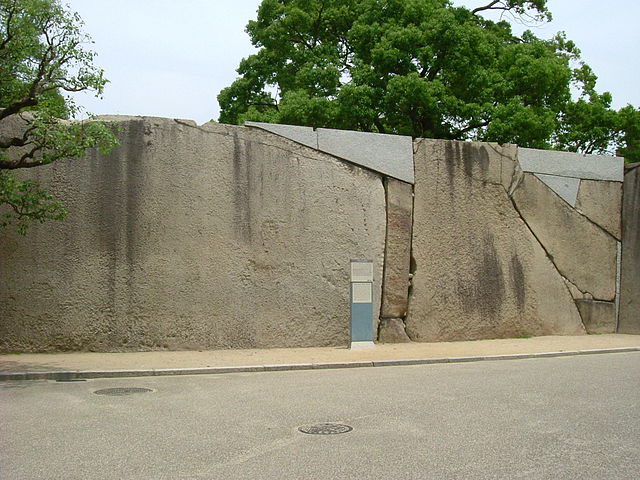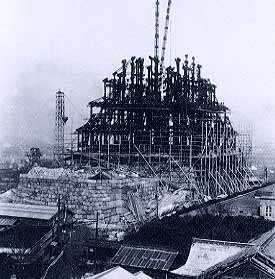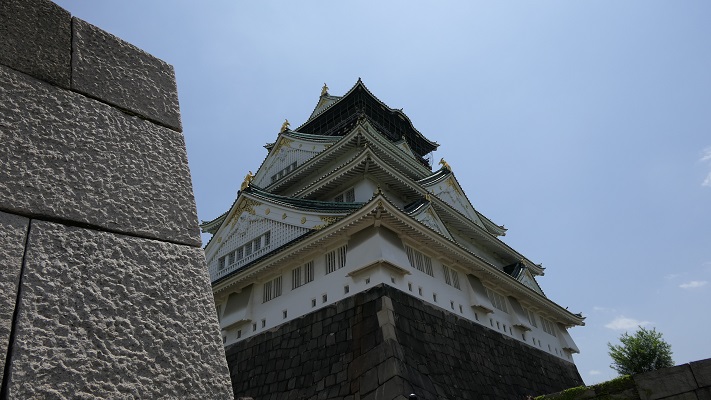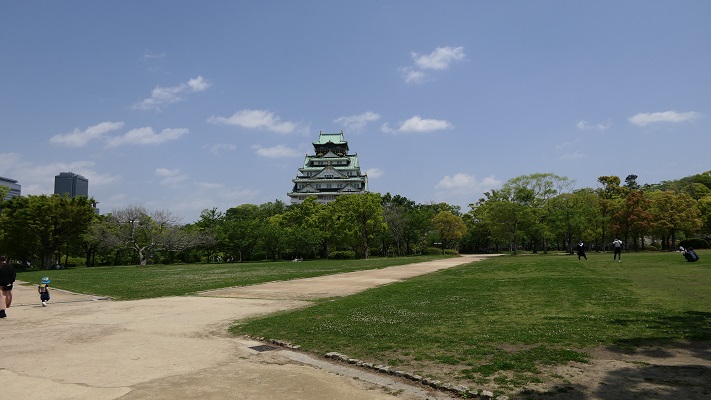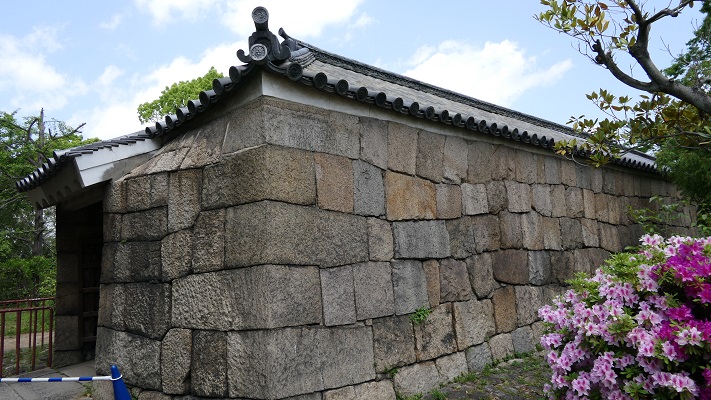沼田城は真田がこだわり続け、しかし最後には失った城です。
Numata Castle is the one that Sanada stuck to strongly, but lost in the end.
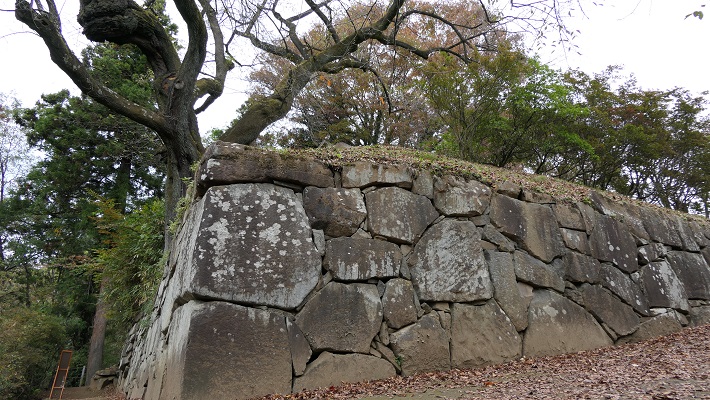
Location and History
群馬県の北部に位置する沼田市は、全国的に河岸段丘の地形で有名です。その高さは、JR沼田駅近くの利根川から70メートル以上になります。市街地はその段丘の上にあり、「天空の城下町」と呼ばれています。
Numata City, in the northern part of Gunma pref., is famous around the whole country for its terrain with river terraces. The height is over 70m higher than Tone River near the JR Numata Station. The urban area of the city is on the top of the terraces and now called “Castle Town in the Sky”.
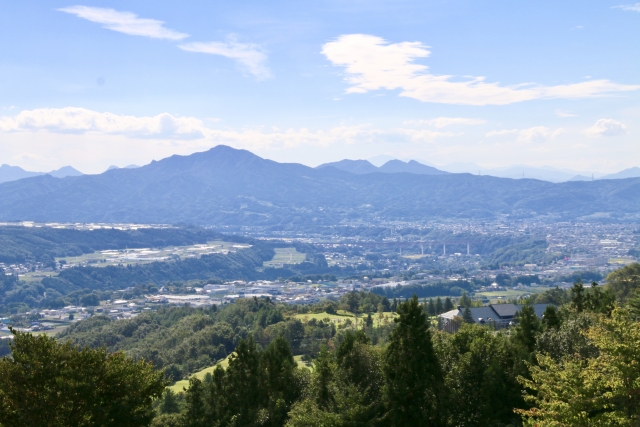
この辺り一帯が最初に注目されたのは恐らく、戦国時代の16世紀頃、関東地方の支配権を巡って戦った上杉、北条、武田、織田、徳川などの有力戦国大名たちによってだと思われます。沼田地域は、関東地方の北の入り口にあたり、東の東北地方から西の信濃国(現在の長野県)に抜けていく主要街道が通っていました。
The area was probably first focused on in the Warring States Period in the 16th century by major warlords such as the Uesugi, Hojo, Takeda, Oda and Tokugawa clans who battled over the right to rule of the Kanto region . The Numata area was the northern entrance of Kanto and had a main road passing through from the east for Tohoku region to the west for Shinano Province (now Nagano pref.).
城周辺の地図及び起伏地図(A normal and relief map around Numata Castle)
沼田城は最初、土豪の沼田氏によって1532年に段丘の突端に築かれました。しかし、1560年の上杉氏の関東侵攻からは非常に重要な拠点として認識されました。結果的には、戦国時代の終わりにおいては武田氏配下の真田昌幸がこの城を保持していました。1582年には彼の主君である武田氏は滅びてしまうのですが、他の有力大名を差し置いて何とか城を守り抜きました。
Numata Castle was first built on the tip of the terrace in 1532 by the local clan Numata, but the castle became a very important site after the Uesugi’s Kanto invasion in 1560. Eventually, Masayuki Sanada under Takeda held the castle at the end of the Warring States Period. Though his master Takeda was beaten in 1582, he struggled against other major warlords to keep the castle.

クライマックスは、1589年に天下人豊臣秀吉の裁断によって、この城が北条氏に引き渡されたときでした。何と真田は、1590年の秀吉の関東侵攻と、北条氏の滅亡により、城の奪還に成功します。この出来事は、北条が約束を破り、真田の名胡桃城を乗っ取ったからだと言われていますが、真相は謎のままです。死人に口なしだからです。
The climax was that the castle was turned over to Hojo in 1589 by the decision of the ruler, Hideyoshi Toyotomi. However, Sanada was successful to get it back after Toyotomi’s Kanto invasion and the fall of Hojo in 1590. It is said that the event was caused due to Hojo breaking the rule and taking Sanada’s Nagurumi Castle. The fact is mysterious because dead men tell no tales.

その後、昌幸の息子、真田信之が徳川の下につき、この城を引き継ぎ1600年前後に天守の建築を含め完成させました。この天守は、将軍がいる江戸城を除いては関東地方で唯一の5層の天守でした。
After that, Masayuki’s son Nobuyuki Sanada under Tokugawa inherited and completed the castle with building the castle Tenshu keep around 1600. The Tenshu was the only five-story one in Kanto region, excluding Edo Castle owned by the Shogun.

1658年に、真田一族の中でこの城の相続を巡ってお家騒動が起こりました。徳川幕府は、真田の分家である信利を沼田藩として、信濃国松代にあった真田本家より独立させる決定をしました。
There was internal trouble in the Sanada clan over the inheritance of the castle in 1658. The Tokugawa Shogunate decided to make the branch Sanada, Nobutoshi separate from the head Sanada in Matsushiro, Sinano Province as the Numata Domain.

信利は、幕府から困難な課役を引き受け、真田本家に対抗するため豪華な屋敷も造営しました。その結果沼田藩の領民は重い年貢に苦しみました。そして信利は、両国橋再建の資材調達に失敗したのと、農民の茂左衛門の幕府への直訴により、1681年に改易となってしまいました。ついには、真田があれほどまでこだわった沼田城は、1682年に幕府により完全に破壊されたのです。
Nobutoshi accepted hard tasks from Shogunate and built luxurious halls against the head Sanada. The result was that people in Numata Domain suffered from high taxes. Nobutoshi was fired in 1681 inspired by his failure of preparing materials for the Ryogoku Bridge rebuilding and the direct appeal to Shogunate by a farmer called Mozaemon. At last, Numata Castle that Sanada were so much devoted to, was completely destroyed by Shogunate in 1682.
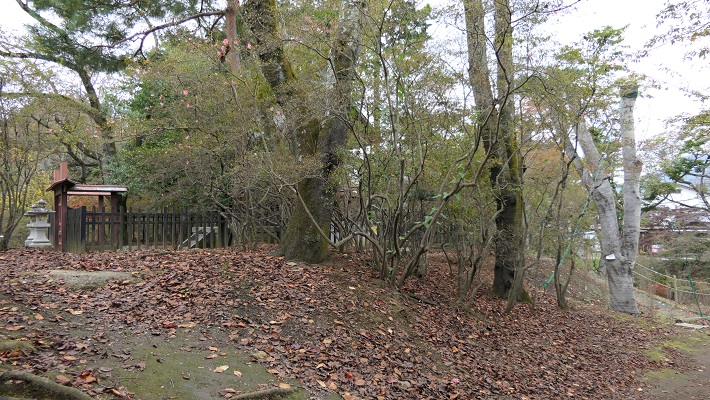
Features
現在沼田城の城跡は、沼田公園として使われています。そこには美しい花々や木々による庭園があるのですが、西櫓の石垣が掘り出されたのと、復元された時計台が残っているのみです。
Now, the ruins of Numata castle have been turned into a park called the Numata Park. Though it has a beautiful flowers and trees garden, only unearthed stone walls of the west turret and the restored clock tower remain.
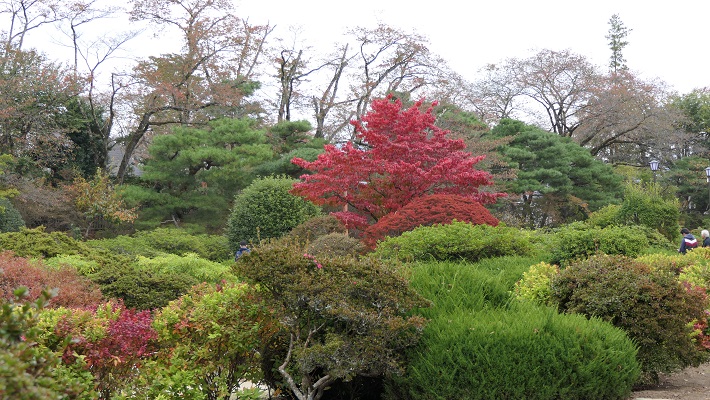

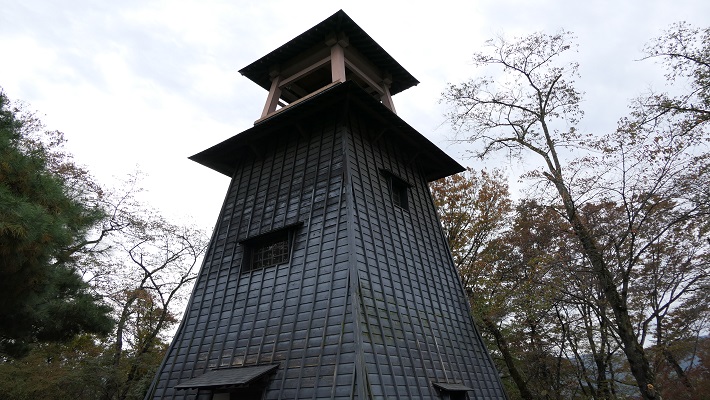
Later Life
真田の城が撤去された後、土岐氏などの大名が江戸時代の間この地域を支配しましたが、藩庁のための建物が設置されたのみでした。明治維新後その建物も撤去され、堀は埋められました。幸いだったのは元藩士の久米民之助が城跡を買い上げ、市に公園として寄付したことでした。
After Sanada’s castle was demolished, some lords like the Toki clan governed the area in the Edo Period. They just had a few office halls to govern. After the Meiji Restoration, the buildings of the castle were removed, and moats were filled. The good thing was that a former warrior Taminosuke Kume bought the ruins and donated them to the city for a park.
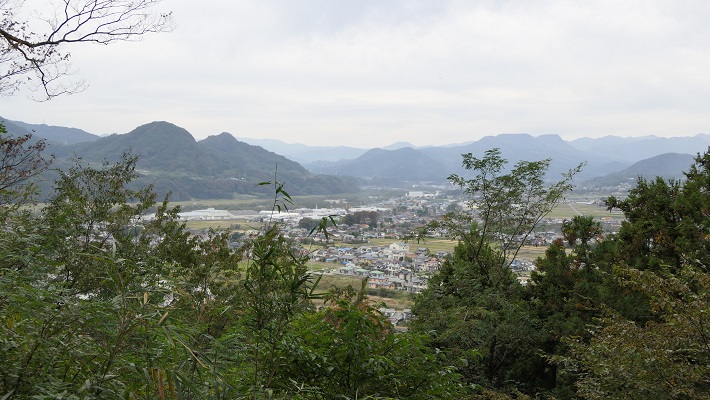
現在、2016年に人気が出たNHK大河ドラマ「真田丸」が放送された後、沼田市には天守を復元できないか検討している人たちがいます。そのドラマは、真田氏、主には信之の弟、真田信繁の人生を描いたもので、信繁は大坂城で豊臣のために徳川と戦ったことで有名です。(真田氏は意図的に徳川方と豊臣方に分かれていました。)ドラマでは、沼田も取り上げられており、そのことが沼田市の観光振興にも寄与しました。
Now, some people in this city are considering how they could restore the Tenshu after a popular NHK drama called “Sanada-Maru” aired in Japan in 2016. The drama was about the lives of the Sanada clan, mainly about Nobushige Sanada, Nobuyuki’s little brother, famous for the fights with Tokugawa for Toyotomi in Osaka Castle. (Sanada clan were divided into Tokugawa and Toyotomi on purpose.) The drama which also featured Numata, led to an increase in tourism for the city.
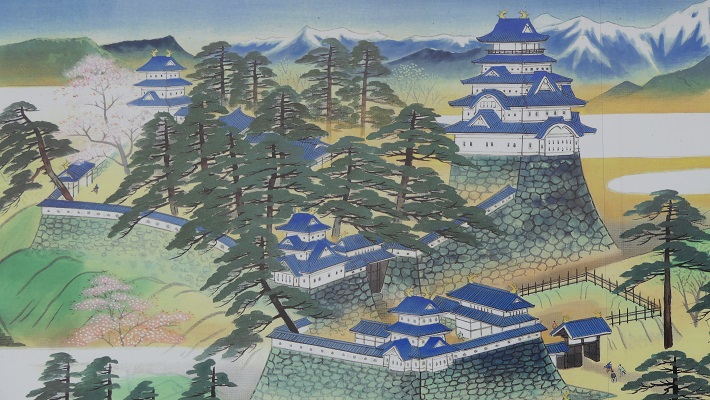
市の人たちは、近い将来に人気が衰えてしまうのを心配しているようです。そして天守のような新しいシンボルを模索しており、白石城のような成功事例を視察したりしています。
People in the city seem worried about the decrease in the near future. They are searching for a new symbol like the Tenshu, and researching successful cases such as the Shiroishi Castle.
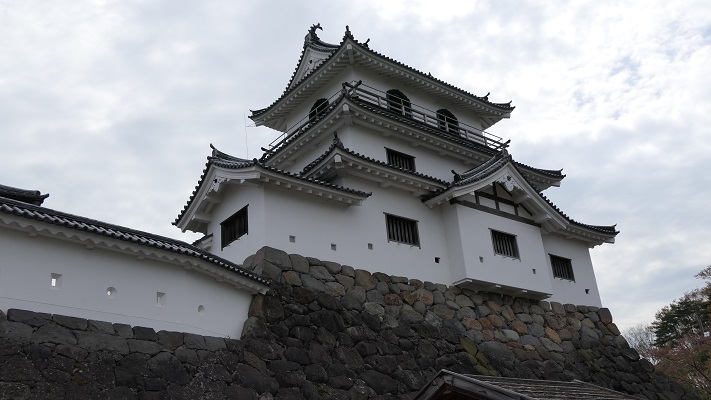
しかしながら実現にはいくつもの大きな問題があります。まず、早々に城が破壊されたため天守の詳細が全くわかりません。現在のところ本丸石垣と、金箔瓦や什器などいくつかの品が発掘されたのみです。加えて文化庁が各地方自治体に明確な根拠なしに歴史的建造物を安易に復元しないよう指導している事情もあります。次として莫大な予算が必要です。もし天守を伝統的木造建築のスタイルで再建する場合、市の年間一般会計予算に匹敵する資金が必要となります。実に悩ましい問題です。
However, there will be big problems that come with it. At first, the details are not clear at all because of the castle being destroyed. Stone walls of Honmaru, and few items like roof tiles with gold leaf and utensils have been excavated so far. In addition, the Agency for Cultural Affairs instructs local governments not to restore historical buildings without clear evidence. Secondly it needs a large budget. If they ever decide to construct the Tenshu in a traditional wooden style, it will require a fund as much as their annual general budget. That is too controversial.
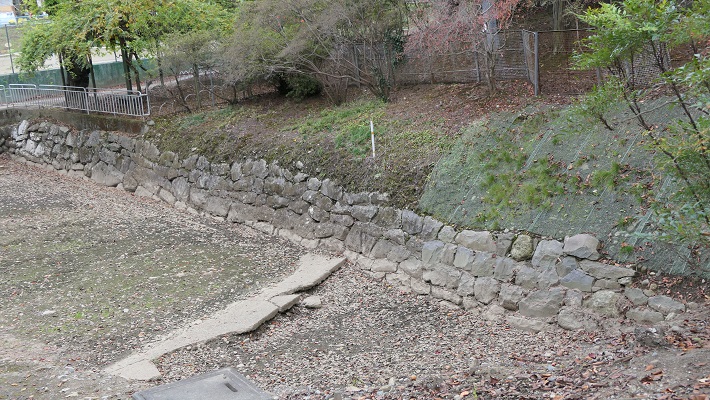
市は、自らを「真田の里」として売り出しています。これからどんな展開になるか注目したいと思います。
The city is also trying to identify itself as “Sanada’s Hometown”. I will keep watching what they are doing now.
My Impression
人気を維持するためまず考えられるのは、大坂城、上田城、名胡桃城、岩櫃城など真田にまつわる城や城跡を持つ自治体と連携してイベントを開くことだと思います。
To keep the population, I think that a reasonable idea is holding events together with other municipalities having relative castles and ruins to Sanada such as Osaka, Ueda, Nagurumi and Iwabitsu.

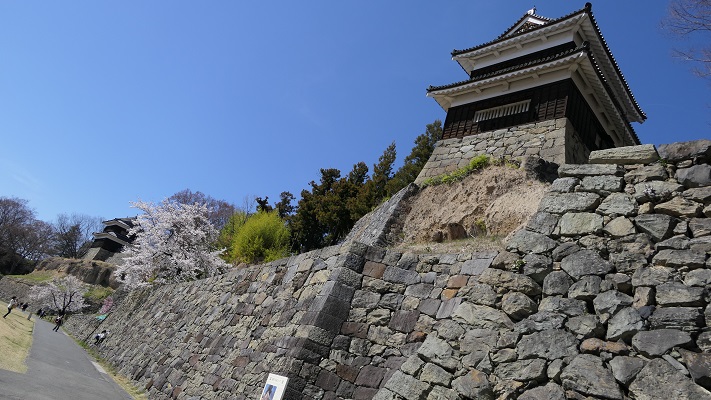
そして、可能性がある方法としては、発掘の結果を基に門か櫓を再建することです。例えば、鉢形城などが類似のケースでしょう。
Then, one possible solution could be rebuilding a gate or a turret based on excavation. There are similar cases, for example in Hachigata.
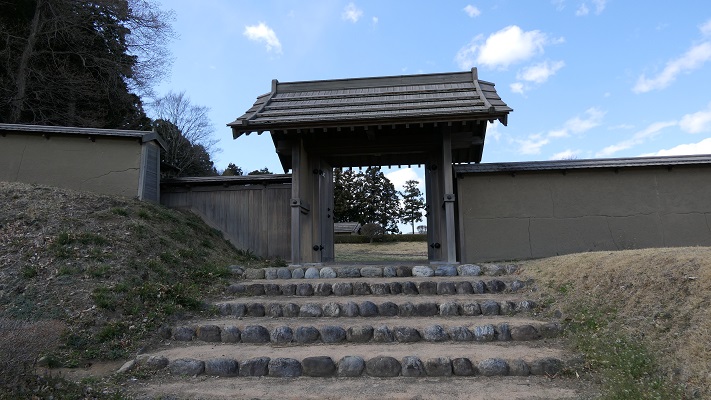
もう一つの可能性として、大分府内城のようにLEDを使って仮想天守の姿を創り出してはいかがでしょう。
For another possibility, how about creating the image of virtual Tenshu with LED like Oita-Funai.
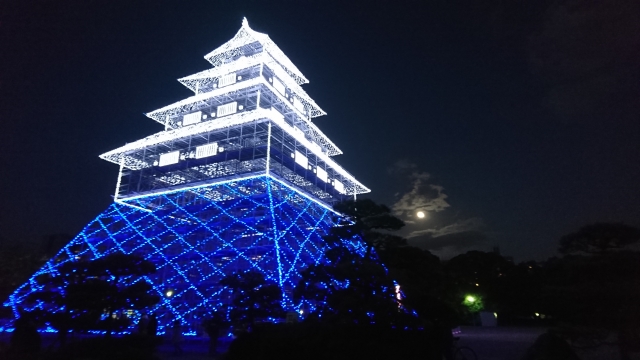
But if they actually want to construct a real Tenshu building, they might have to be prepared for using it as their office hall.
でも、もし本当に本物の天守を作りたいのであれば、市役所の建物に使うくらいの覚悟が必要なのではないでしょうか。
How to get There
沼田城跡に行くには車が便利です。関越自動車道の沼田ICから約10分です。電車を使う場合は、JR沼田駅から歩いて約20分かかります。河岸段丘の急坂を登っていく必要がありますが、それも面白いかもしれません。
東京から沼田駅まで:上越新幹線に乗って高崎まで行き、上越線に乗り換えてください。
It is useful to access Numata Castle Ruins by car. It takes about 10 minutes from Numata IC on Kan-Etsu Expressway. When using train, it takes about 20 minutes on foot from JR Numata Station. It needs to climb up a steep hill on the river terraces, but it may be interesting.
From Tokyo to Numata Station: Take the Jo-Etsu Shinkansen super express to Takasaki, then transfer to Jo-Etsu local line.
Links and References
・沼田市観光協会(Numata Tourism Association)
・沼田市議会新政同志会平成29年第1回会派調査・研修報告(Japanese Document)

